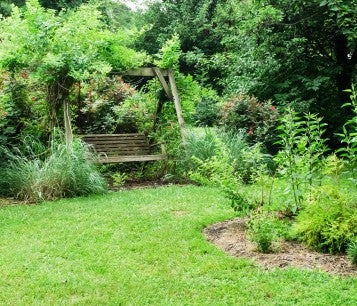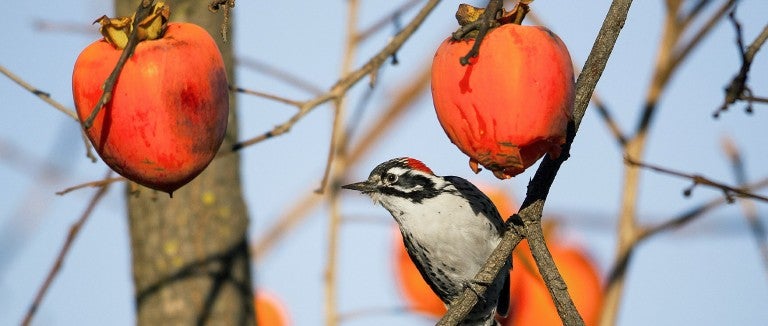As my neighbors and I stood 10 feet apart and swapped tips for scavenging kitchen staples this spring, the wilder residents of our community shared no such concerns. Squirrels twirled maple seed clusters like bouquets to reach every tidbit. Bumblebees made a mockery of social distancing in their traffic jams around redbuds. Rabbits munched violet salads in between mad-hopper courtship displays.
Our habitat was their grocery store, their hot date, a place to nest and rest. But, contrary to news reports, these increased sightings didn’t mean they’d suddenly claimed new territory due to decreased human presence. “They’re always here,” notes HSUS urban wildlife director John Griffin. “But they’re just more comfortable in their daily life.”
Content with permanent stay-at-home orders, the animals found everything they needed in a limited range. Watching them was a humbling experience that begged the question: Could we do the same? As I made a mental inventory of available ingredients for a doomsday diet, I realized that practically every plant on the wildlife menu could fill our plates too. There were the edible natives that had sprouted on their own, like fleabanes and walnuts, plus the ones I’d intentionally planted to feed us all: pawpaws for opossums, raccoons and zebra swallowtail butterfly caterpillars; persimmons for groundhogs and Eastern comma butterflies; serviceberries for bees, thrushes and chipmunks.
Most exciting from a home landscaping perspective, native strawberries can form a beautiful groundcover.
Wild neighbors are the ultimate locavores, but lawn-dominated landscapes disrupt their relationships with plants. And though humans have to eat too, modern industrialized farms also displace habitat. Planting a native edible garden is an easy first step to reversing those trends. Check out these tips for getting started.
A humane backyard is a natural habitat offering wildlife plenty of food, water and cover, plus a safe place to live free from pesticides, chemicals, free-roaming pets, inhumane practices and other threats. And it's so easy to build!

Forget the “green thumb” myth
Plants grew without humans for half a billion years, and they still do. Many of the native edibles in my garden—black raspberries, hickories, oaks, staghorn sumacs, sassafras—were seeded by wildlife or wind. All I had to do was leave them alone. Around the country, native edible junipers, roses, brambles, ferns, cherries, plums and grapes grow abundantly; check your state’s native plant society for recommendations.
Choose plants of many talents
Hybrid supermarket fruits have obscured plants like delicious native strawberries that feed bees, turtles and birds. Most exciting from a home landscaping perspective, native strawberries can form a beautiful groundcover. If you have space, plant nut trees to rise above them; their leaves will support caterpillars, and their fruits will yield protein for wildlife and you.
Exclude and share
It’s easy to share native edibles with some animals, such as bats who quietly roost in loose bark of shagbark hickories. But at Russ Cohen’s Massachusetts nursery, squirrels and chipmunks eat potted hickory nuts before they even sprout. “I say to myself, ‘If they only knew … how their progeny would benefit so greatly once all these nut trees get planted out there,’” muses Cohen, who donates native edible plants to parks, sanctuaries and tribal lands. “But they are thinking short term. And we humans—we can relate to that because we often think that way, too.” Cohen humanely excludes nibblers by covering pots with hardware cloth and crosshatched wire. Otherwise, he grows extra to share—and honors the animals’ role in dispersing seeds far and wide.
Use plants to creatively coexist
Though mammals typically avoid common milkweed—a host plant for monarch butterflies that can spread prolifically—Backyard Foraging author Ellen Zachos says its cooked shoots and flowers are great additions to human menus. That’s true of many local species; in my Maryland garden, strong scents of wild bergamot, mountain mint and spicebush make tasty teas and attract pollinators but aren’t appealing to larger herbivores. But deer and rabbits need nourishment, too, so they’re free to snack on preferred plants, and their pruning services make my garden asters and goldenrods even lusher.
Truth be told, I leave everything I can for my wild friends. But there is comfort in knowing that if the world goes topsy-turvy again, they’ll have planted the seeds of enough extra plants to share the bounty in return.
Want more content like this?
This was written and produced by the team behind All Animals, our award-winning magazine. Each issue is packed with inspiring stories about how we are changing the world for animals together.
Learn MoreSubscribe
